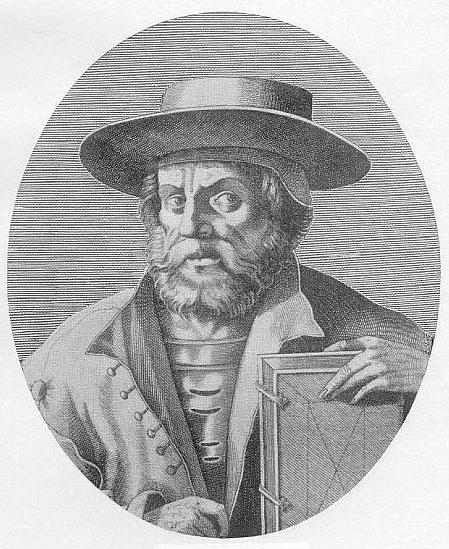Week 19

In 1390, Manuel Chrysoloras (1355-1415) came to Venice on a diplomatic errand as the representative of the Byzantine Emperor in Constantinople. While visiting Venice he met a number of Florentines and one, Giacomo da Scarperia, followed him home to Constantinople to study Greek. Other Florentines heard about Chrysoloras and therefore in 1396, the Florentine Chancellor Coluccio Salutati invited Chrysoloras to come to Florence as a professor of Greek. Chrysoloras would teach the ancient language to whomever might want to attend the classes. This event—a formal program of Europeans studying Greek—is as useful a mark for the beginning of the Renaissance as any. With the arrival of Chrysoloras in Florence, almost a thousand years of Western European ignorance of Greek came to an end. And with this new field of study came new books, new publications, new ideas. The study of Greek sparked new interest in mathematics, astronomy, geography, geometry, optics, and cartography. By the 1420’s Florence found itself the center of an international movement that would create modern Europe.
RECOMMENDED READING

J. H. Plumb,
The Italian Renaissance,
Mariner Books; Revised edition (June 19, 2001),
ISBN 0618127380
Amazon: Spanning an age that witnessed great achievements in the arts and sciences, this definitive overview of the Italian Renaissance will both captivate ordinary readers and challenge specialists. Dr. Plumb’s impressive and provocative narrative is accompanied by contributions from leading historians, including Morris Bishop, J. Bronowski, Maria Bellonci, and many more, who have further illuminated the lives of some of the era’s most unforgettable personalities, from Petrarch to Pope Pius II, Michelangelo to Isabella d'Este, Machiavelli to Leonardo. A highly readable and engaging volume, THE ITALIAN RENAISSANCE is a perfect introduction to the movement that shaped the Western world.
A useful book this week is the brilliant The Italian Renaissance by J. H. Plumb. This is a wonderful and succinct introduction to the Renaissance by one of our greatest historians, J. R. Plumb. Plumb was one of Britain's greatest historians. Professor Plumb died in 2001.
RECOMMENDED READING:
This two-volume history of Florence is the best detailed study of Florence ever written. Schevill wrote a masterpiece of well researched narrative history for Florence in 1936 and then it was republished in a Harper Torchbook paperback in 1961. The Harper Torchbook is still out there in used book stores so we have purchased five for our library. But there are still copies left if you want to own one. It is two volumes with the first volume devoted to our period of Medieval History and the second volume on Renaissance Florence. For the Lombards see Medieval Florence (Volume 1) Chapter Three, "Darkness Over Florence."

Ferdinand Schevill,
Medieval and Renaissance Florence,
Harper Torchbook paperback, 1963, 2 volumes,
ISBN B000PX4SUU
Ferdinand Schevill, Medieval and Renaissance Florence. The Schevill book that we used in on our class during "The History of Medieval Italy," is still useful for this class. But this year you would only want Volume 2 on Renaissance Florence. It is a very detailed historical record of events in Florence during the Fifteenth Century. If you want one book to give you the year by year events and explanations of basic political structures, this is the book you want to own. Copies of both volumes are in our Institute library and used copies can still be found on Amazon.
ABOUT THE AUTHOR:
Ferdinand Schevill (1868–1954) was an American historian. He graduated from Yale University in 1889 and finished his PhD at Freiburg in 1892. That same year he arrived at the University of Chicago, where he taught from 1892 to 1937. Schevill’s first book, a textbook on Western European history, was Political History of Europe from 1500 to the Present Day. It was revised and reissued many times. In 1922 he publishedThe History of the Balkan Peninsula: From the Earliest Times to the Present Day. Schevill retired in 1924. In 1930 he reentered the University in the Humanities General Course of general education. He retired five years later to finish The History of Florence(1936). Schevill continued to research, and in his eightieth year he went from the University of Chicago to lecture in Frankfurt. In this era, Schevill specialized in the historiographies of famous writers from the Renaissance.
- Siena: The History of a Medieval Commune (1909)
- Germany and the Peace of Europe (1914)
- The Rise and Progress of Democracy (1915)
- Karl Bitter: A Biography (1917)
- A History of Europe: From the Reformation to the Present Day (1925)
- The First Century of Italian Humanism (1928)
- The History of Florence (1936) — reprinted as Medieval and Renaissance Florence (1965)
- The Great Elector (1947)
- The Medici (1949)